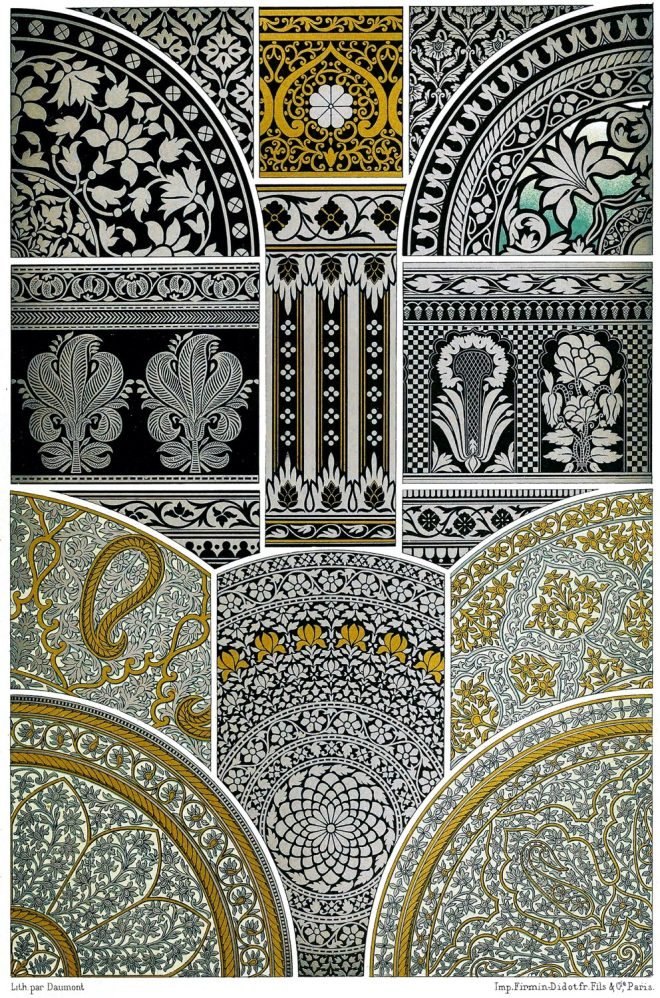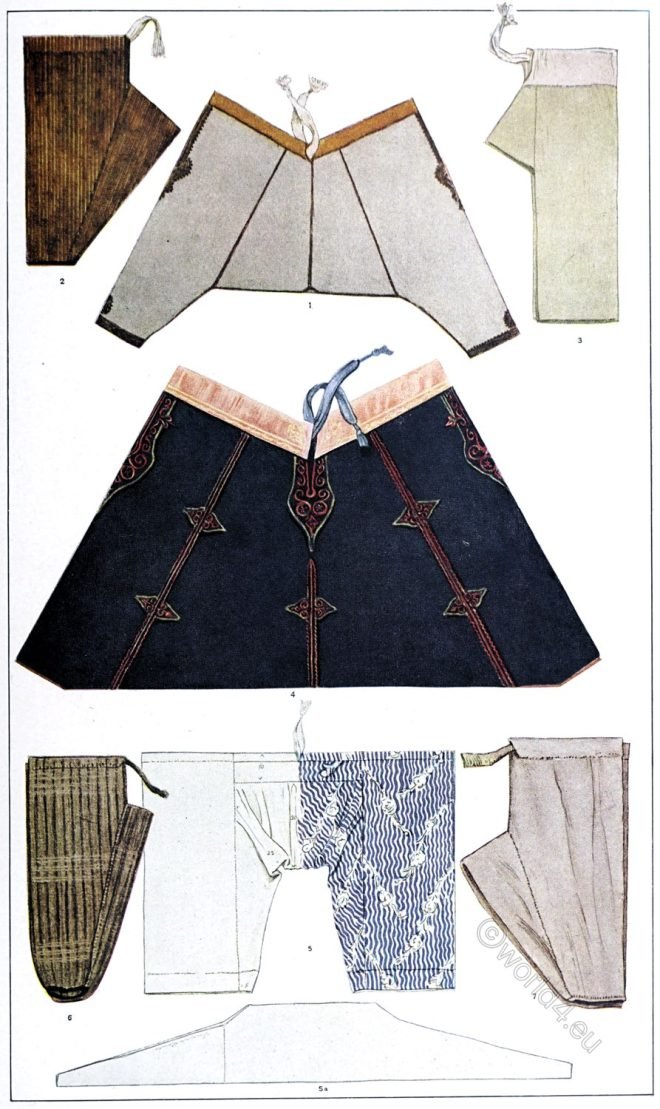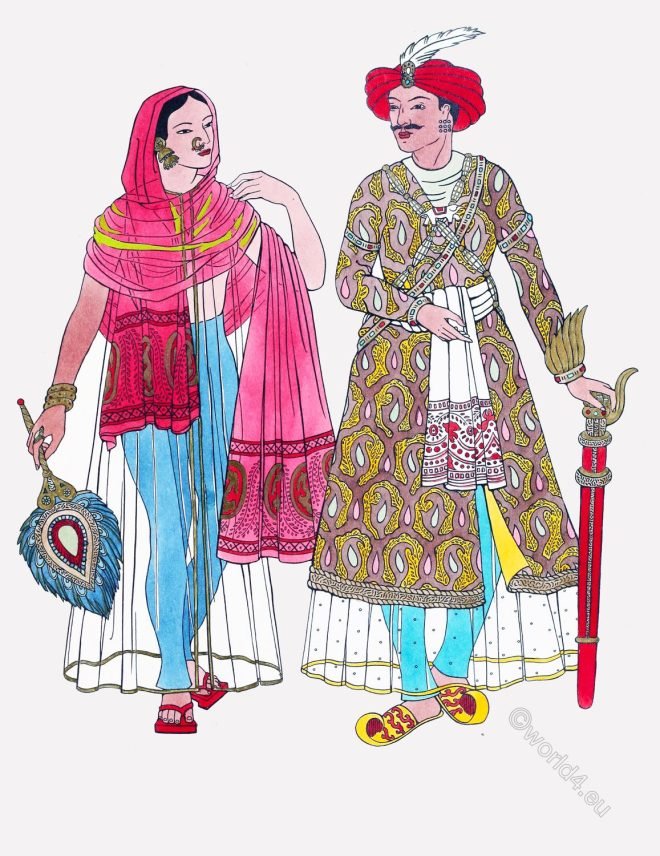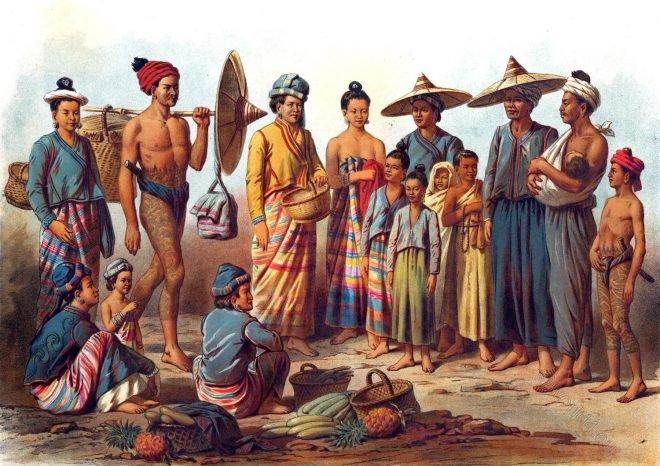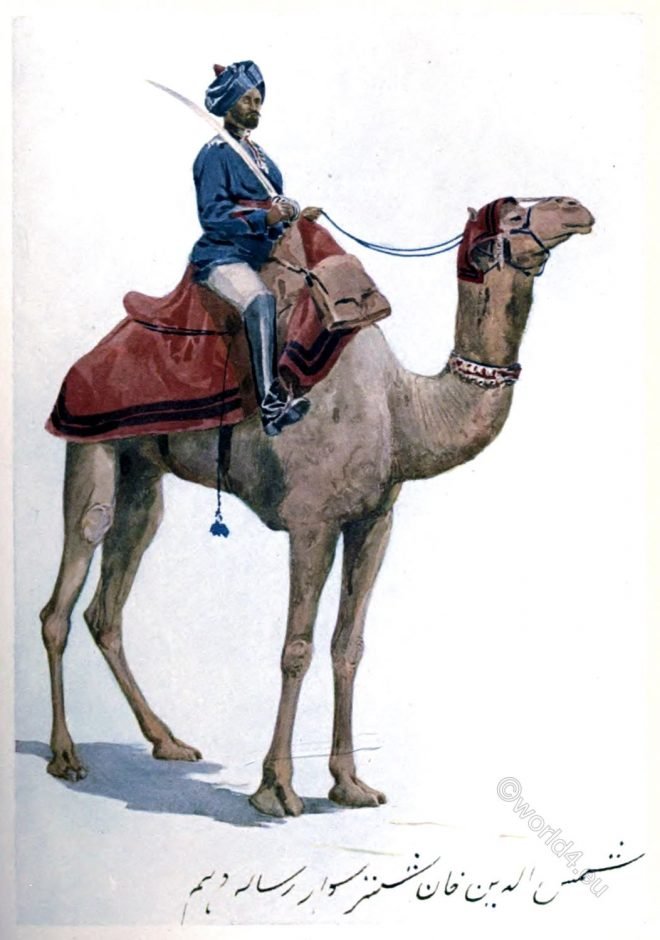A sampan or river boat used in Cochinchina glides along a narrow canal; it is ridden by a dozen Annamites of all conditions.
Category: Asia
Costume and fashion history of Asia. Manners and Customs. Collected from rare sources.
Indian Art. Niellos and engraved metals. Ornamental decorations.
Niellos and engraved metals. Ornamental decorations on utilitarian objects.
Indian arts and crafts of the 19th century.
The Hagia Sophia of Trebizond, Turkey. Byzantine Architecture.
The Hagia Sophia, former Byzantine monastic church in Trabzon. Byzantine Art, History and Architecture.
Trouser shapes of Asia Minor. Turkey, Kurdish, Persian.
Trousers of a Kurdish leader. Turkish men’s trousers, Armenian women’s trousers, Persian men’s trousers.
Gardens of the Dal Lake at Srinagar in Kashmir.
Mughal gardens in Srinagar, Kashmir. Gardens of the Great Mughals by Constance Mary Villiers Stuart. Nishat Bagh, Shalimar Bagh.
A shop and street in Chinatown of San Francisco.
A shop and street in Chinatown from a portfolio of photographs by John L. Stoddard and Old Chinatown by Arnold Genthe.
Benares, the sacred city in the Vedic times.
Benares, (Varanasi) the sacred city: sketches of Hindu life and religion. Early worship, early ritual, religious literature, Brahmanas and Upanishads
Noble dancing girl. Woman in typically Oriental ensemble.
In earlier India, there were nobles and dancing girls; whose dress on festive occasions was not too different from the one depicted here.
Burmese Laos. Laotians of the Burmese possessions.
The Northern Laos, inhabited by the black-bellied Laotians, so named because the men have the habit of tattooing their belts and sometimes their whole body.
A Camel-Sowar of the 10th Bengal Lancers. India c. 1880.
THE men of the loth Bengal Lancers are mostly Sikhs; they have blue and red lance-pennons, blue kurta and blue cone-shaped turban.


